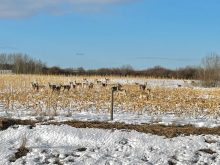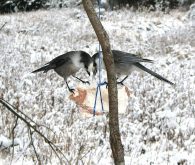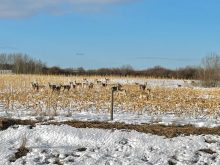It may have been a lean year for grazers, but that has not translated into a spike in predation, according to insurance numbers.
The Manitoba Agricultural Service Corporation (MASC) has actually seen slightly fewer predation claims to date than last year. As of Oct. 25, a total 1,310 claims had been reported, compared to 1,494 as of the end of October 2020.
David Koroscil, MASC manager of claims services, said that those numbers are encouraging.
“We’ll see once calving starts in January and a bit of the fall calving started now where there’s more vulnerable calves out there. It may be a factor,” he said. “But in terms of predation, I think it really depends what other wildlife species are out there for the predators to attack.”
Read Also

MANITOBA AG DAYS 2026: Stacked equipment category expected at Innovation Showcase
Ten of 28 Innovation Showcase entries at the Manitoba Ag Days 2026 farm show Jan. 20-22 in Brandon are in the equipment category.
In total last year, the agency saw 1,855 claims.
The Manitoba Beef Producers, likewise, says it has seen a drop in predation complaints.
“We haven’t been getting as many concerns or call-ins,” general manager Carson Callum said.
“Not to say that it’s not happening,” he added, “but just, drought has been the major focus of producers and predation has not been on the front of things.”
The province has, however, noted a general increase in problem bears, even if those numbers have not translated to a jump in predation claims.
Earlier this year, Manitoba’s beekeepers said they had seen an alarming increase in bear strikes on beeyards, incidents listed under MASC’s coverage for wildlife damage to crop. As of the end of July, MASC had reported 87 such claims, near to the typical five-year average for a full season.
The province also reported a general increase in bears getting too close to humans.
A total 2,700 interactions between bears and people were reported to date this year, the province reported, much higher than the long-term average of about 1,500 reports a year. Interactions may range year to year from less than 1,000 to over 2,000, the provincial government said in an email to the Manitoba Co-operator.
This year saw a generally normal proportion of those reports result in bears being relocated or killed, the province further noted.
















